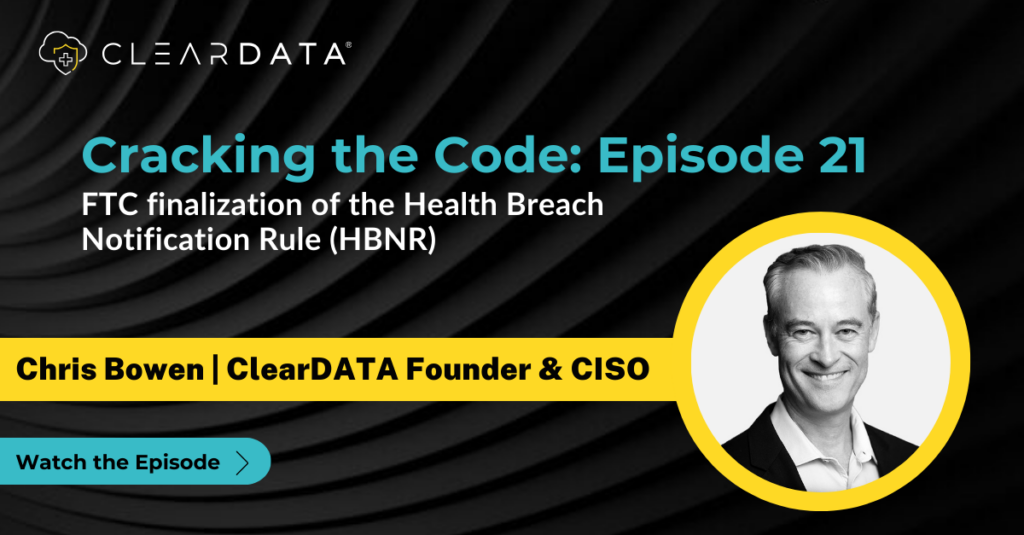ClearDATA’s Commitment to Resilience Amid the CrowdStrike Outage
Table of Contents

As we contemplate the recent global technology outage triggered by a faulty software update, it’s hard not to wonder exactly how this happened, and if it could happen again. It reminds us that we can’t solely focus on cyber attackers and that major disruptions and problems can come from what feels like the safest place – within.
The impact of this outage was felt on a global scale, affecting various industries. Notably, the fallout was especially serious for hospitals and health systems. The disruption to medical technology and communications, along with the hiccups experienced by third-party service providers, led to delays, diversions, and even cancellations of some clinical and much-needed medical procedures.
Operationally, healthcare provider teams could no longer access patients’ electronic medical records (EMR). Their hands were suddenly tied and they couldn’t provide the care patients needed.
Now, healthcare organizations must reckon with what happened with this outage, and if it can happen again.
Staying Ahead of the CrowdStrike Outage & Supporting Our Customers
First, let me pause and reflect on last week and how we supported ClearDATA customers when the outage occurred: Starting on Thursday night, before the full outage we’d all see take hold on Friday, our services and customer teams received alerts signaling that this was coming. We stood up a Service Desk that night to proactively monitor and support affected customers.
Thankfully, none of our customers have been affected through ClearDATA infrastructure. We did reach out to approximately 30 of our customers on Azure who may have been impacted. We began to reach out to them immediately and have stayed in close contact to provide them with assistance. We deeply thank our customer, services, and sales teams for their swift response and dedication in the wake of the outage and into this week.

Ensuring Our Business Processes Avoid Similar Pitfalls
In the aftermath of the outage, our immediate focus was not only on supporting our customers but also on scrutinizing our own business processes to ensure we weren’t making the same errors.
Our internal audit teams conducted a thorough review of all update protocols and security measures. We scrutinized the layers of our infrastructure, assessing and stress-testing each component to verify its resilience against potential software faults. Additionally, we implemented additional redundancies and updated our incident response plans to enhance our readiness for unforeseen disruptions. Maintaining rigorous standards and continuously evolving our practices means we remain committed to delivering reliable and secure services to our customers.
Providing Guidance to the Broader Healthcare IT Sector
Healthcare providers who choose a cybersecurity cloud vendor do so with foresight, recognizing the critical importance of protecting healthcare data and infrastructure from cyber criminals. Still, in healthcare, the stakes are incredibly high, where the consequences of downtime are so much greater than the inconveniences of things like travel delays. These outages can be life-threatening to patients.
With this in mind, we’re taking proactive measures to guide the healthcare IT market, sharing comprehensive preparedness and resiliency actions that healthcare organizations should integrate into their operational frameworks.
This outage highlights the need for operational resiliency, which is vital for healthcare businesses to thrive in today’s volatile environment. Resiliency should be built through strong third-party relationships—ensuring suppliers and partners can withstand disruptions—and within internal operations. This means creating flexible processes, investing in technology that boosts adaptability, and fostering a culture that embraces change. With a steady focus on both external and internal factors, organizations can better navigate uncertainties, minimize risks, and maintain continuity, leading to sustained success and competitiveness in the market.
Read more on how to ensure your business preparedness and resiliency:
-
- Mitigating Software Release Impacts for Business Resiliency by ClearDATA Chief Technology Officer Jim Ducharme
-
- Preparing for the Unpredictable: Outage Lessons for Healthcare Tech Leaders by ClearDATA Chief Services Officer Charles Cinert
Looking Forward from the Outage

There’s really only one way forward: We have to critically assess our approach to software updates, our preparedness strategies, and our operational resiliency to ensure this does not and cannot happen again.
It’s up to us, the stewards of healthcare technology and innovation, to ensure nothing like this happens again. We must pave the path forward for continuous healthcare delivery and the well-being of patients. It’s up to us to do things differently.
Stay ahead of the healthcare cybersecurity curve.


